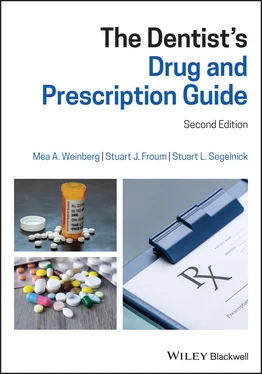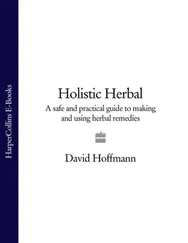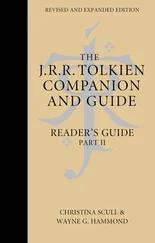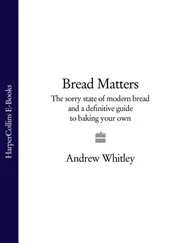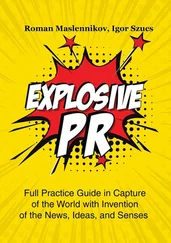1 ...6 7 8 10 11 12 ...20 14 A. Both. Regulations can be under state or federal law. The prescriber must review individual laws in their state. For example, under federal law, a prescription for Schedule II substances must be filled within 30 days of writing. A state could establish rules tighter than the federal rules and the most restrictive clause will prevail, whether state or federal.
15 Q. According to state and federal law, are there limits to the quantity of controlled drugs that can be prescribed?
16 A. While states may have more restrictive rules, the federal law does not limit the amount prescribed. The most restrictive clause will prevail, whether state or federal.
17 Q. Can Schedule I substances be prescribed by a private practitioner?
18 A. No. Schedule I substances have the highest abuse potential and no medical uses, thus no indications to be prescribed, and are not legally available to the public. This is a federal law and does not vary from state to state.
19 Q. Can Schedule II substances be prescribed by a private practitioner?
20 A. Yes. Schedule II drugs have a high abuse potential and include narcotics and amphetamines. There cannot be any refills and prescriptions are invalid after a certain number of days which is state regulated. For example, in New Jersey any controlled substance prescription can be filled in a pharmacy within 30 days of writing the prescription. After the limit, a new prescription is required. A Schedule II drug can be phoned into the pharmacy only in emergency situations and must be followed up by a written prescription within 72 hours. Only a three‐day supply can be dispensed.
21 Q. What are the regulations for Schedule III drugs?
22 A. Schedule III drugs have a lower abuse potential than Schedule II drugs. Prescriptions for Schedule III substances expire six months after the date written. Refills are allowed but only five refills within six months. A practitioner may issue a new prescription for the Schedule III substance within a six‐month period if necessary.
23 Q. What is the refill regulation for Schedule IV and V drugs?
24 A. Five refills in six months.
25 Q. Can the prescriber presign prescriptions for controlled substances?
26 A. No. Federal law prohibits prescribers from presigning prescriptions. All prescriptions for controlled substances must be dated and manually signed on the day the prescription was written.
27 Q. What are prescription drug monitoring programs (PDMPs)?
28 A. Diversion of controlled substances that have a high potential for abuse or profit when sold illegally is a serious problem. Different methods of diversion include illegal selling of controlled substance by physicians, dentists, and pharmacists; prescription theft; and inappropriate prescribing by physicians and dentists to themselves, family members or others. Drug monitoring programs were developed to control diversion. The program is run via an electronic database that tracks controlled substance prescriptions in a state. These monitoring programs are intended to improve opioid prescribing and protect patients at risk. Some states that have a drug monitoring system include California, Hawaii, Idaho, Illinois, Indiana, Massachusetts, Michigan, New York, Oklahoma, Rhode Island, Texas, New York, and New Jersey. Information on controlled drugs, primarily Schedule II substances, prescribing, dispensing, and purchasing is sent via electronic means to the state and analyzed. New York State also has extended its program to include benzodiazepines that are federally scheduled as C‐IV controlled substances. Therefore, in New York State, all benzodiazepines, such as alprazolam (Xanax®) or diazepam (Valium®) require a new prescription every month and no refills.
2.4 Principles of Prescription Writing
1 Q. What is a legend drug?
2 A. A legend drug is a drug that can only be dispensed by a pharmacist with a prescription. Labels on these medications carry the legend: “Caution! Federal law prohibits dispensing without a prescription.”
3 Q. What is the chemical name of a drug?
4 A. The chemical name describes the chemical make‐up of a drug. For example, the chemical name for acetaminophen is N‐acetyl‐p‐aminophenol.
5 Q. What is the proprietary name of a drug?
6 A. Other terms for proprietary name are brand or trade name and refer to the drug name assigned by the specific manufacturer which is protected by copyright. For example, one of the brand names for ibuprofen is Motrin® (McNeil).
7 Q. How long is a prescription valid until it is filled?
8 A. Every state has different rules which apply to prescriptions. A nonnarcotic prescription is valid for 365 days (one year) from the date on the prescription. Check with the local state boards for state‐specific laws.
9 Q. How is the quantity of the drug being dispensed written?
10 A. The symbol # is acceptable to indicate number and informs the pharmacist to dispense tablets, capsules or liquid ounces. Sometimes the prescriber will write Disp: before the #, meaning “dispense.” For example: Disp: # 12.
11 Q. What does “Sig” refer to?
12 A. Sig refers to the Latin word signatura, meaning “write,” “make” or “label.” This is the direction to the patient on how to take the medication.
13 Q. Should the dosage form of the drug be indicated on the prescription?
14 A. Yes. Tablets, capsules, suspension, or solution must be indicated on the prescription. For example, amoxicillin 500 mg Disp: # 28 capsules.
15 Q. Should the drug strength be written on the prescription?
16 A. Yes. The correct strength of the drug prescribed must be clearly written on the prescription. For example, amoxicillin 500 mg.
17 Q. Should the route of administration be specified on the prescription?
18 A. Yes. The dentist must indicate the correct route of administration of the drug prescribed even if it is orally.
19 Q. Should the duration of the drug prescribed be specified on the prescription?
20 A. Yes. The number of days or weeks must be written on the prescription. For example, penicillin V, 500 mg tid for seven days.
21 Q. Does the number of refills need to be written on the prescription?
22 A. Yes. If no refills are required, then “NR” or “zero” should be checked or written on the prescription. The number of refills should be spelled out. Do not just write “0.” Some prescriptions have a checkoff box for “None.”
23 Q. How many refills are allowed for nonscheduled and scheduled drugs?
24 A. The prescriber can write for no refills, indicated by NR (no refills). Prescription drugs may be refilled for only one year after the date of the prescription. A prescription for a controlled substance listed in Schedule III–V can only be refilled for six months or five refills, whichever comes first, after the date on such a prescription. After five refills or six months, whichever occurs first, a new prescription is required. For Schedule II drugs, there are no refills allowed.
25 Q. What is the law for dispensing a controlled substance for office use?
26 A. A blanket prescription cannot be written to provide a medical/dental office with medications for administration. If the office requires C‐II medications, a DEA 222 form must be used to transfer the C‐II stock. For all other medications, an invoice must be utilized.
27 Q. What does “label” on the prescription mean?
28 A. When the prescriber wants the patient to know the name of the drug, the box on the prescription form marked “label” should be checked.
29 Q. Can I phone in a prescription for a medication?
30 A. Yes. A nonnarcotic medication (e.g., antibiotics, nonsteroidal antiinflammatory drugs [NSAIDs]) can be phoned into the pharmacist and does not require a follow‐up written prescription to be sent to the pharmacist.When phoning in a controlled substance (e.g., Vicodin® C‐II, Tylenol® with codeine C‐III, Percocet C‐II), the rules are different. Schedule II drugs cannot be phoned into the pharmacy except in an emergency and must be followed up with a written prescription usually within 72 hours (states may require that the prescription be sent to the pharmacist in a shorter time frame and the more restrictive clause prevails) and only for a three‐day supply. Schedule III drugs can be dispensed by an oral (verbal) or written prescription and does not need a follow‐up written prescription (the pharmacist writes all information which is equivalent to a written prescription). Renewal of Schedule III–V drugs can be called in to the pharmacy.
Читать дальше
